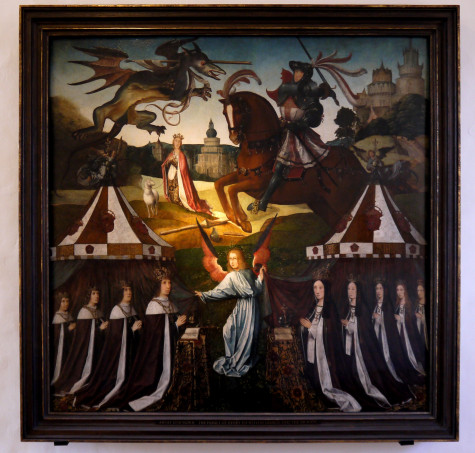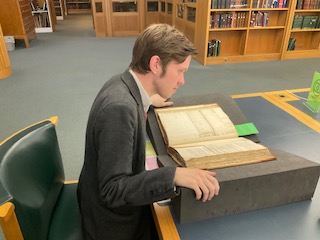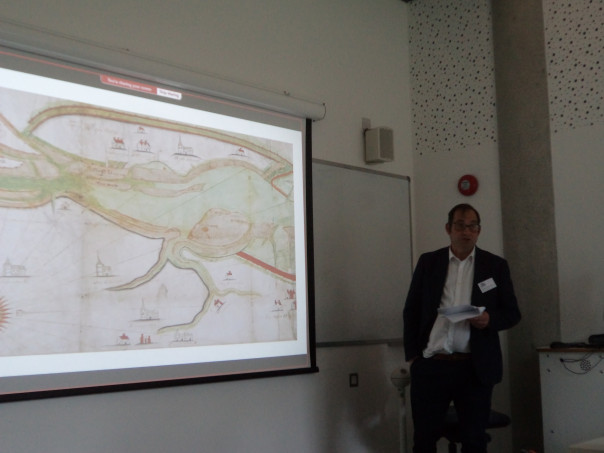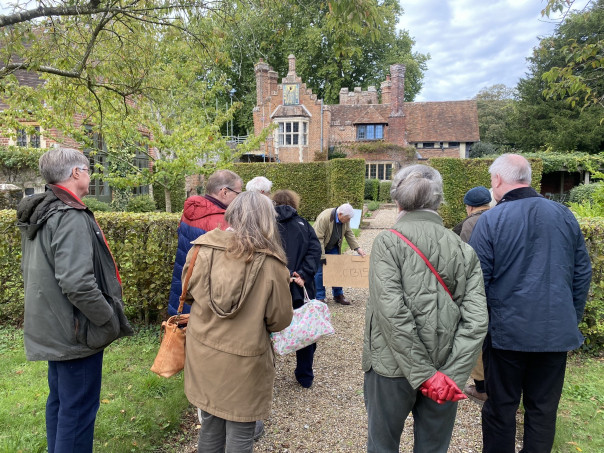I shall start this week with a note of congratulations to Dr Dessoy, whose doctoral thesis is now complete and the next event will be her graduation. Thus, well done Tracey for your fascinating thesis on the roles of women as patrons and land holders in Canterbury and its extensive hinterlands during the High Middle Ages, and that is another success story for the Kent History Postgraduates!
Of course, among the other activities this week has been contacting all the speakers for Tudors and Stuarts 2025, which will take place from Friday 25 April to Sunday 27 April, to ensure all is well and that they know how they are being supported by the CCCU Bookshop – many thanks Craig for that. If you haven’t discovered this, the CKHH’s 10th History Weekend, please do check out the fabulous programme at: https://ckhh.org.uk/tudors-stuarts and we shall be delighted to welcome you to Augustine House to hear talks by amongst others Alison Weir – Queen Mary I, Rory Loughnane – Shakespeare’s missing years, Clare Jackson – Devil-Land, and Jackie Eales – Women in the English Civil Wars. I’m afraid the popular guided tours have been booked up for weeks, but tickets for all of the talks are still available, so do have a pick-and-mix feast!!

I’ll be promoting the History Weekend, as well as other forthcoming CKHH events on Saturday at Maidstone Museum as part of their ‘Local History’ month activities. Consequently, if you are in Maidstone, please do come and see the CKHH stall because I’ll also be able to tell you about our research activities and the other events that will be taking place soon. Talking of research, it was great that last week Noah Brock, a MEMS MA student at CCCU, was able to join Kieron Hoyle on an archives trip to the British Library. Noah is studying the impact of the early Reformation at the level of the parish in Kent for his dissertation and he was keen to explore the Dover records held at the BL. Kieron, too, is studying Tudor Dover for her PhD. However, as regular readers of the blog will know, her focus is the development of the harbour under various monarchs, as well as the changes that took place at the Maison Dieu, which moved from being a medieval pilgrim hospital to becoming a royal naval victualling yard, one of five in southern England. As you can see Kieron had kindly introduced Noah to the BL and he is heavily engrossed in exploring the records.
Kieron and Jason Mazzocchi, another of my PhD students, will be in Hull this weekend to give papers at the ‘New Researchers in Maritime History’ conference, which is organised by The British Commission for Maritime History in association with the University of Hull and supported by the Society for Nautical Research. Both Kieron and Jason will be speaking on Saturday but in different panels. Kieron is the first paper in the session on ‘New Naval Histories’, while Jason is the lead paper in the conference’s final session on ‘From the Local to the National’. He will be speaking on the role and implications of the oyster disputes in Elizabethan and early Jacobian Faversham society, especially for the local merchants and mariners and their networks, by exploring how the leading citizens constructed the various narratives involving these disputes – from pictorial maps to depositional texts. Consequently, I shall look forward to their report on the conference and I’ll be including this in the CKHH blog next week – do watch out for the piece in next week’s blog because Jason will be starting with the Gough Map.

If you haven’t seen the Gough Map and you get a chance to see it at the Bodleian Library in Oxford, take it because it is a fascinating depiction of the British Isles. Again, as hopefully regular blog readers will remember, I am part of the Leverhulme-funded Gough Map project through Oxford University and the IHR because I was studying the depictions of Kent and Surrey. Hopefully, it will not be too long before the edited collection is published because there are lots of new insights into this wonderful map and how it opens a window onto late medieval society.
Nearer to home but also a means to provide insights into late medieval and early modern Kent, as well more broadly – the micro to the macro, we have the FREE study day and web launch of the Kent Maritime Communities project (CKHH at CCCU and the University of Southampton) on Saturday 10 May. The study day is entitled ‘Kent and Europe, 1450–1640: Merchants, Mariners, Shipping and Defence’ (this is also the title of the project team’s new book) and will take place at the Community Cinema in Dover Museum. The programme begins with Kieron and Jason who will speak on their doctoral research regarding early modern Dover and Faversham respectively. Then Professor Craig Lambert will give a brief overview of the project followed by talks from Drs Robert Blackmore, Gary Baker and me, the other team members, on our respective chapters and Craig will finish by launching the website and showing a couple of examples from it. Ben Cornwell, who manages the CKHH website will be adding details of this event shortly, but in the meantime, there is also a link here: https://www.canterbury.ac.uk/merchants-mariners-shipping-and-defence and don’t forget the stunningly conserved and refurbished Maison Dieu that will be re-opening the same weekend.

So far this has all been very good news, but now a change of direction and I’m going to end this week with a tribute to someone who has been a great friend and supporter of the CKHH. A decade ago, I reported on the funeral of Ian Coulson, the inspirational teacher, historian and all-round decent person after whom the fund for Kent history postgraduates is named, well last week I attended the funeral of Peter Hobbs, another similarly inspirational individual. This was clear from the sheer number of people present at Barham, as well as that they represented the vast range of Peter’s professional and other interests, the latter including his passion for the archaeology and history of Kent, especially the east of the county in and around Nonington, which started when he moved to the area in the later 1990s. It was through this interest that I first met Peter because, even though he had studied history at Oxford, he was still working in the upper echelons of the Civil Service and didn’t have the time to delve into the archives.
Consequently, I had a great time researching his Tudor house, as well as the manor and estate with its links to St Alban’s Abbey, its Anglo-Saxon roots and its post-Reformation history through the Hammond family who moved from abbey tenants to owner-occupiers – the rise of Kentish gentry families echoed across the county, who survived by marrying into similar families, but like others barely survived into the 20th century. Since those early days, which similarly involved and still involves the Dover Archaeological Group (DAG) under the leadership of Keith Parfitt much has been discovered, and Peter also supported two MA by Research students to competition on projects concerning Gloucester and Nonington, as well as exploring further ways to extend this partnership. Thus, it was good, albeit extremely sad, to be able to remember these good times with Keith and others from DAG and CAT, where Peter had been one of the trustees, and to see the warmth with which he is remembered by all concerned, perhaps we cannot ask for anything better.
 Centre for Kent History and Heritage
Centre for Kent History and Heritage Sheila Sweetinburgh
Sheila Sweetinburgh 1333
1333


